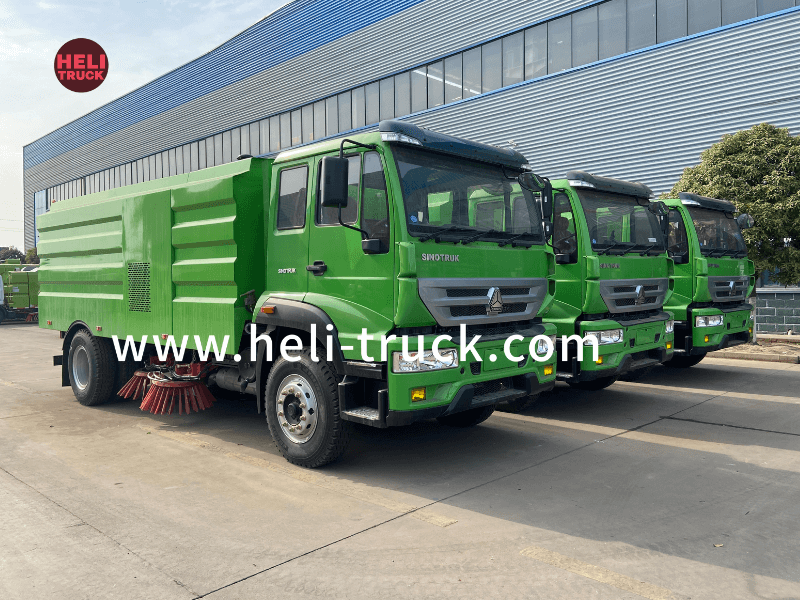Introduction:
Garbage compactor trucks play a crucial role in waste management by efficiently collecting and compacting trash from residential areas, commercial establishments, and public spaces. These specialized vehicles are designed to compact waste materials, thus maximizing the truck's capacity and reducing the number of trips required to transport the garbage to disposal sites. This article provides a detailed comparison of various garbage compactor truck features to help stakeholders make informed decisions when selecting the most suitable vehicle for their waste management needs.
1. Types of Garbage Compactor Trucks:
There are several types of garbage compactor trucks available in the market, each designed to cater to specific waste management requirements. The most common types include rear-loading compactor trucks, front-loading compactor trucks, side-loading compactor trucks, and roll-off compactor trucks. Each type has its unique features and advantages, making them suitable for different applications.
2. Capacity and Compaction Ratio:
One of the key features to consider when comparing garbage compactor trucks is their capacity and compaction ratio. The capacity of a compactor truck refers to the volume of waste it can hold before reaching its maximum load. A higher capacity truck can collect more waste in a single trip, thus increasing operational efficiency. The compaction ratio, on the other hand, indicates how much the waste is compressed inside the truck's body. A higher compaction ratio results in reduced waste volume, leading to fewer trips to disposal sites and lower transportation costs.
3. Loading Mechanism:
The loading mechanism of a garbage compactor truck determines how the waste is collected and compacted into the truck's body. Rear-loading compactor trucks feature a rear-loading hopper where waste is manually or mechanically loaded into the truck. Front-loading compactor trucks use a front-loading mechanism with an automated arm to lift and empty waste containers into the truck. Side-loading compactor trucks have a side-loading mechanism that allows for easy collection of waste from curbside bins. Roll-off compactor trucks are designed for collecting large volumes of waste in open containers that can be rolled on and off the truck.
4. Hydraulic System:
The hydraulic system of a garbage compactor truck is responsible for powering the compaction mechanism and other essential functions of the vehicle. A high-quality hydraulic system ensures smooth operation and efficient compaction of waste materials. When comparing garbage compactor trucks, it is essential to evaluate the type and capacity of the hydraulic system to ensure optimal performance and reliability.
5. Control System and Automation:
Modern garbage compactor trucks are equipped with advanced control systems and automation features to improve operational efficiency and safety. These systems may include touch-screen interfaces, remote monitoring capabilities, and automated compaction cycles. When comparing garbage compactor trucks, it is crucial to assess the control system and automation features to determine their impact on overall performance and ease of operation.
6. Safety Features:
Safety is a paramount consideration when operating garbage compactor trucks, given the nature of the waste collection and compaction processes. Key safety features to look for in compactor trucks include backup cameras, proximity sensors, emergency stop buttons, and warning alarms. Garbage truck recycling enhance the safety of operators and pedestrians in the vicinity of the truck, reducing the risk of accidents and injuries.
7. Maintenance and Serviceability:
Proper maintenance and timely servicing are essential to ensure the longevity and reliability of garbage compactor trucks. When comparing different models, it is crucial to consider factors such as ease of maintenance, availability of spare parts, and service support from the manufacturer. A well-maintained compactor truck will have minimal downtime and lower operating costs over its service life.

8. Environmental Considerations:
Garbage compactor trucks play a vital role in waste management and environmental sustainability. When comparing different models, it is essential to evaluate their environmental impact, including fuel efficiency, emissions levels, and recycling capabilities. Choosing an environmentally friendly compactor truck can help reduce carbon footprint and contribute to a cleaner and greener environment.
Conclusion:
Garbage compactor trucks are essential tools in waste management, offering efficient collection and compaction of trash for disposal. By comparing the various features and capabilities of different compactor truck models, stakeholders can make informed decisions to select the most suitable vehicle for their specific waste management needs. Factors such as capacity, compaction ratio, loading mechanism, hydraulic system, control system, safety features, maintenance requirements, and environmental considerations should be carefully evaluated to ensure optimal performance, reliability, and sustainability in waste management operations.
